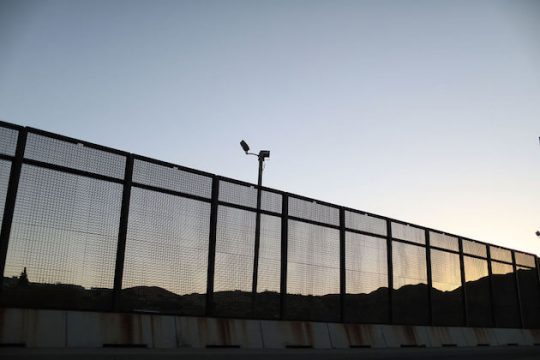Maybe the media would be happier if El Paso had more crime.
They can't enjoy making President Trump's point by repeatedly telling us it's one of the safest cities in America. The Washington Post is eager to pull an Acosta, with its headline pronouncing "No Crisis Exists" where there is a border wall.
It's almost as if … walls work.
But not if Trump says they do. Crime has been falling for decades they say, and it has nothing to do with the fence separating it from Ciudad Juarez, which is not, how should we say, safe.
"Texas city U.S. safest, despite Mexico drug war next door," Reuters reported in December 2010, after new fencing was completed a year before.
Stray bullets from Mexican cartel gun battles did break a window in the El Paso mayor's assistant's office but the violence, where "more than 3,000 people have been tortured, shot and blasted to death in gang warfare," was contained in Ciudad Juarez.
What could possibly have helped keep El Paso safe?
"Aside from a few rounds that have struck city hall and a building at the University of Texas at El Paso campus this year, violence has not spilled over the border's concrete and steel fences, although residents face mortal danger when they step across the river into Ciudad Juarez," Reuters reported.
Jessica Vaughn of the Center for Immigration Studies noted in March 2009 that El Paso was the safest border city, thanks in no small part to its border barrier.
"One key factor in that status has to be the large Border Patrol presence and the fence," she wrote. "Over the last 15 years, through a combination of increased personnel, completion of the fence, technology to support agents in the field, and inventive policies, the El Paso Border Patrol sector has proven that indeed the border can be controlled."
The media keep bringing up 1993 as when crime in El Paso peaked and then started to decline. Well, what happened in the decades since?
Vaughn noted in 1993 the "average number of apprehensions per day in the El Paso sector was well over 1,000." On a single day alone, the Border Patrol apprehended 1,400 illegal aliens. By 2009, the sector was down to just 38 daily apprehensions. A "huge factor" was the fence.
"Before it was constructed, one of the main highways west of the downtown area, Paisano Drive, was dubbed 'the most dangerous highway in America,'" Vaughn explains. That's another way to say El Paso "used to have extremely high rates of violent crime."
"Thugs would cross regularly from the Mexican side and place old sofas and other obstacles in the roadway to stop cars, whose passengers would then be robbed, assaulted and/or raped."
The media won't much care about that fact—they're more than happy to downplay sexual assaults in their pursuit to "get Trump." But what did law enforcement credit for less crime in El Paso?
"Sheriffs in the outlying areas that have new fencing report similar drops in crime, and unequivocally credit the fence," Vaughn wrote. "Assaults on Border Patrol agents, which had been climbing, were down 49 [percent] in 2008."
"The fence is an obvious and indispensable ingredient in border control in this area," Vaughn concluded. "The first fence was installed in downtown El Paso in 1967, and it is still standing, although reinforced by more barriers."
That could explain why crime has been dropping for decades. Well, the fence and the city's lack of gun control.
In 2008 the El Paso Times, which is now the basis for all the "fact-checks" trying to disprove Trump's point about the city's declining crime, reported on the new border fence construction.
"The overall goal is to be able to impede illegal immigrants and the smuggling activity that comes with that at times," Border Patrol-El Paso Sector spokesman Doug Mosier told the paper. "The fencing, he said, would also reduce attacks on Border Patrol agents."
Sounds important. What did residents have to say?
"West Side resident Michael Walsh said he disliked the fence for aesthetic reasons and because it is so expensive," the El Paso Times wrote. "But, he said, something must be done to slow illegal immigration."
